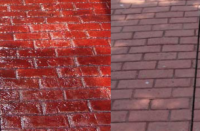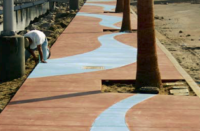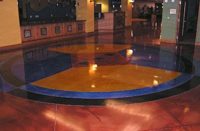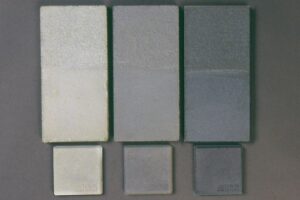 The minute you add integral color to concrete, people look at it differently than they do gray concrete — their expectations are higher. Educating your client about integral color is important. Be sure to explain its limitations. But, also, be sure to use good techniques. These contractor-recommended tips can help ensure excellent results and success with integrally colored concrete:
The minute you add integral color to concrete, people look at it differently than they do gray concrete — their expectations are higher. Educating your client about integral color is important. Be sure to explain its limitations. But, also, be sure to use good techniques. These contractor-recommended tips can help ensure excellent results and success with integrally colored concrete:
- Make sure the sub-grade is evenly saturated, otherwise discoloration may occur.
- Find a reliable ready mix producer and work as a team.
- Make sure the design mix is duplicated exactly for consistency in multiple pours (i.e. stick with one brand of cement, one source of sand and aggregate, the same amount of water and admixes, etc.).
- Be aware that weather plays a role in the results. Don’t pour if rain is expected within 24 hours. Pay attention to temperature and humidity conditions.
- Use a wood bull float instead of a magnesium bull float. A wood bull float lets bleed water evaporate. A magnesium float can seal up water, which can cause discoloration.
- Integral color is good as is, but you also can achieve aesthetically pleasing finishes by exposing the sand and aggregate in the mix.
- When applying a broom finish, be sure to change your broom — instead of rinsing it — when material buildup occurs. Extra water deposited by a rinsed broom can cause discoloration.
- Never spray water on the surface during the finishing stage.
- Proper curing is important in ensuring consistent color.
- Don’t use plastic to cover integrally colored concrete. Condensation on the underside of the plastic can discolor the concrete.















